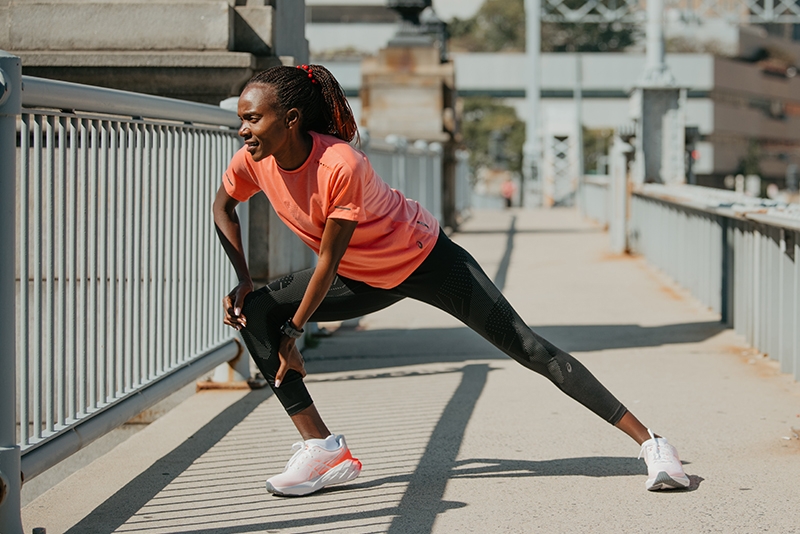Turbocharge Your Runs: Unlock Your Potential with Strategic Running Workouts
Wiki Article
Handling Typical Running Discomforts: Reasons, Solutions, and Avoidance
As runners, we commonly run into numerous pains that can hinder our performance and enjoyment of this physical activity. By exploring the root reasons for these running pains, we can uncover targeted services and precautionary steps to make sure a smoother and a lot more satisfying running experience.Typical Running Discomfort: Shin Splints
Shin splints, an usual running discomfort, typically result from overuse or improper shoes throughout physical activity. The recurring anxiety on the shinbone and the tissues attaching the muscular tissues to the bone leads to inflammation and discomfort.To prevent shin splints, individuals ought to slowly boost the strength of their exercises, put on appropriate footwear with proper arch support, and maintain flexibility and stamina in the muscle mass surrounding the shin (running workout). Furthermore, integrating low-impact activities like swimming or biking can help maintain cardiovascular physical fitness while enabling the shins to heal.
Common Running Pain: IT Band Syndrome
Along with shin splints, another prevalent running discomfort that professional athletes usually encounter is IT Band Disorder, a problem created by swelling of the iliotibial band that leaves the outer thigh and knee. IT Band Syndrome typically shows up as discomfort on the exterior of the knee, particularly during activities like running or biking. The iliotibial band is a thick band of fascia that attaches the aware of the shin, and when it ends up being inflamed or limited, it can massage against the thigh bone, leading to pain and discomfort.Runners experiencing IT Band Syndrome might discover a painful or aching feeling on the external knee, which can intensify with ongoing task. Elements such as overuse, muscular tissue imbalances, incorrect running kind, or insufficient workout can add to the development of this problem.
Usual Running Pain: Plantar Fasciitis

Plantar Fasciitis can be credited to different aspects such as overtraining, incorrect shoes, working on tough surface areas, or having high arcs or level feet. To stop and minimize Plantar Fasciitis, runners can integrate extending workouts for the calf bones and plantar fascia, use helpful shoes, preserve a healthy weight to minimize stress on the feet, and slowly boost running strength to prevent abrupt stress and anxiety on the plantar fascia. If signs and symptoms linger, it is advised to get in touch with a medical care specialist for correct medical diagnosis and treatment choices to deal with the condition effectively.
Common Running Discomfort: Jogger's Knee
After attending to the difficulties of Plantar Fasciitis, another prevalent concern that joggers commonly deal with is Runner's Knee, a common running discomfort that can impede athletic performance and create discomfort during exercise. Jogger's Knee, likewise called patellofemoral discomfort disorder, manifests as discomfort around or behind the kneecap. This problem is typically credited to overuse, muscular tissue discrepancies, incorrect running techniques, or troubles with the positioning of the kneecap. Joggers experiencing this discomfort may really feel a boring, hurting discomfort while running, increasing or down stairways, or after prolonged durations of sitting. To stop Jogger's Knee, it is critical to integrate correct warm-up and cool-down regimens, preserve strong and well balanced leg muscles, use suitable shoes, and gradually raise running intensity. If signs and symptoms continue, looking for guidance from a healthcare expert or a sporting activities medicine professional is recommended to detect the underlying cause and establish a customized treatment strategy to reduce the discomfort and prevent additional difficulties.Typical Running Discomfort: Achilles Tendonitis
Commonly afflicting runners, Achilles Tendonitis is an agonizing problem that affects the Achilles tendon, causing discomfort and prospective restrictions in physical task. The Achilles ligament is a thick band of cells that attaches the calf bone muscles to the heel bone, essential for activities like running, jumping, and walking - take a look. Achilles Tendonitis commonly creates due to overuse, incorrect shoes, poor extending, or sudden increases in exerciseSigns of Achilles Tendonitis consist of discomfort and rigidity along the ligament, especially Read More Here in the morning or after periods of inactivity, swelling that aggravates with task, and perhaps bone stimulates in persistent instances. To stop Achilles Tendonitis, it is vital to stretch correctly previously and after running, use proper shoes with proper assistance, progressively raise the strength of workout, and cross-train to minimize recurring stress and anxiety on the ligament. Therapy might include rest, ice, compression, elevation (RICE protocol), physical therapy, orthotics, and in extreme instances, surgical procedure. Early treatment and appropriate treatment are important for handling Achilles Tendonitis efficiently and avoiding long-term complications.
Final Thought

Report this wiki page